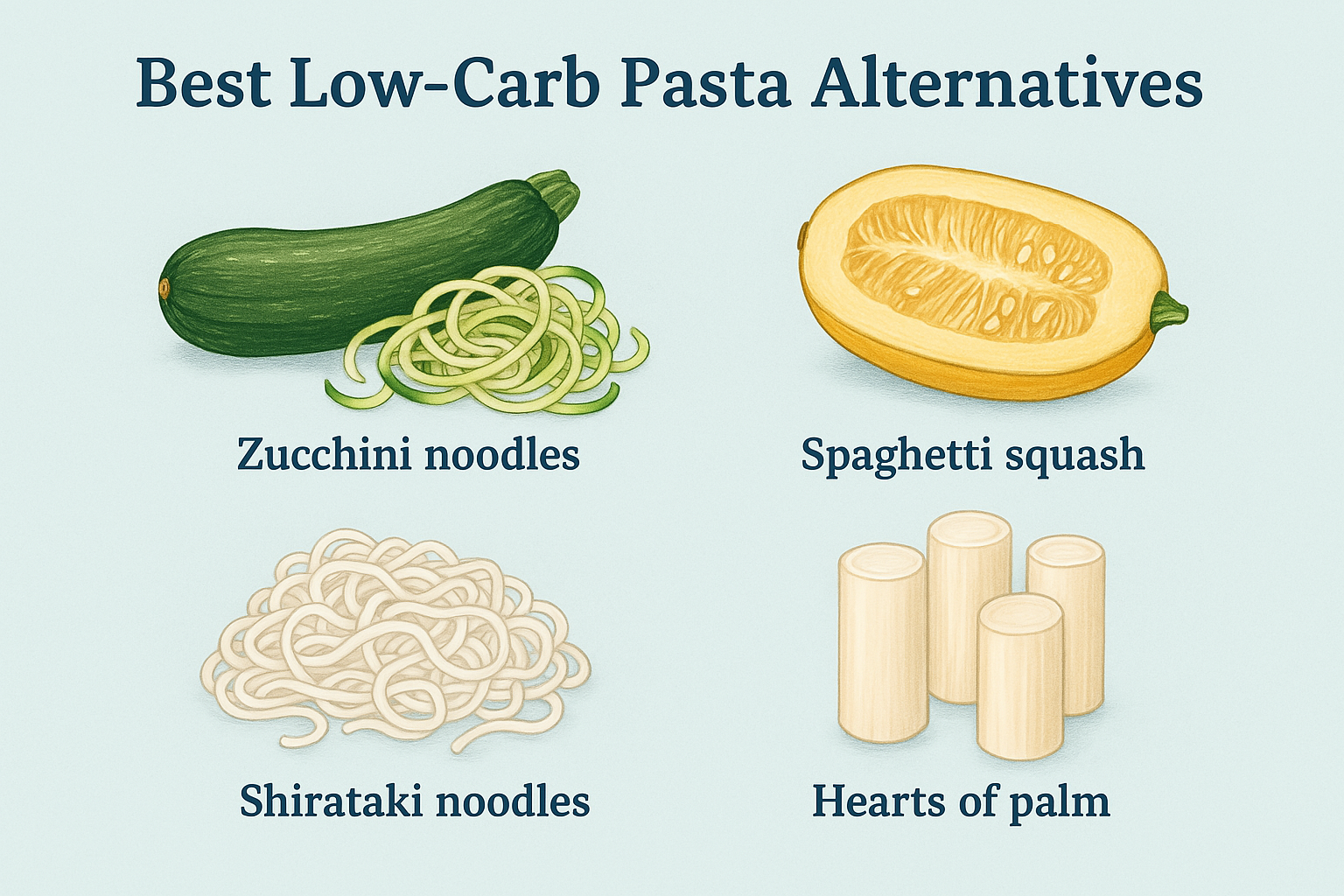In this article I will discuss the Best Low-Carb Pasta Alternatives that cutting down on carbs doesn’t have to mean giving up on your favorite pasta dishes.
Zucchini noodles, spaghetti squash, and almond flour pasta are just a few examples that are suitable for gluten-free, paleo, or keto diets, making it easier to adhere to a clean lifestyle while still relishing flavorful dishes without unnecessary calories.
Key Point & Best Low-Carb Pasta Alternatives List
| Pasta Alternative | Key Point |
|---|---|
| Zucchini Noodles | Light, refreshing, and easy to spiralize; perfect for keto and paleo. |
| Butternut Squash Pasta | Slightly sweet and rich in vitamins; great roasted or spiralized. |
| Spaghetti Squash | Naturally stringy texture mimics spaghetti; low in carbs and calories. |
| Kelp Noodles | Made from seaweed; zero carbs and gluten-free with a crunchy texture. |
| Palmini (Hearts of Palm Pasta) | Very low-carb and fiber-rich; neutral taste absorbs sauces well. |
| Cabbage Noodles | Budget-friendly and ultra low-carb; best stir-fried or sautéed. |
| Almond Flour Pasta | Gluten-free and protein-packed; ideal for hearty, grain-free dishes. |
| Eggplant Noodles | Grilled or baked; mild flavor and rich in antioxidants. |
| Celeriac Noodles | Earthy flavor with a firm bite; great in soups or stir-fries. |
| Lupin Flour Pasta | High-protein and fiber-rich; excellent for diabetic-friendly diets. |
1. Zucchini Noodles
Zucchini noodles (or zoodles) are an exceptional alternative to low-carb pasta. They are made from raw zucchini which is not starchy and has negligible carbs.
Unlike most veggie noodles, zoodles, indeed, are unique with their extremely low calorie and net carbs content which makes them suitable for keto, diabetic and weight loss diets.
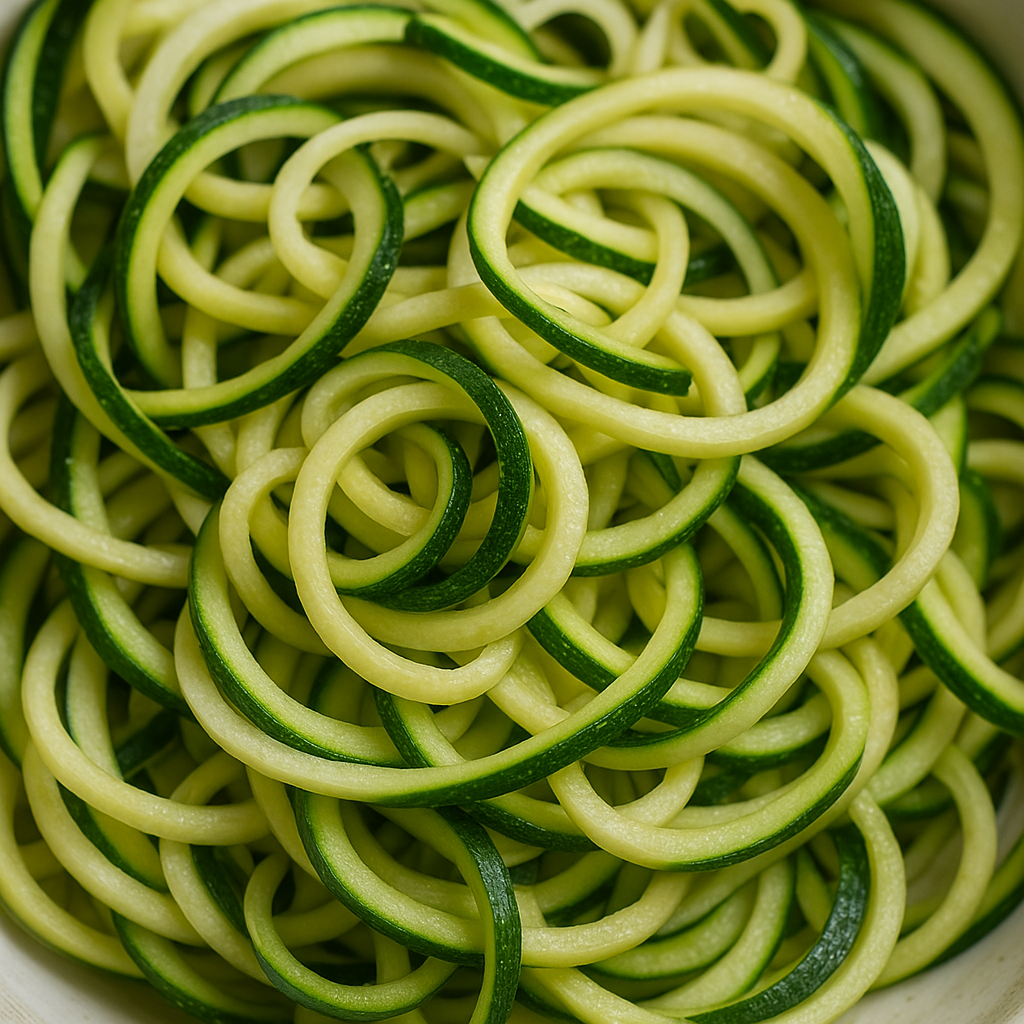
Unlike traditional pasta, zucchini noodles offer a light and crisp texture and absorb flavors from sauces and spices beautifully while providing Vitamin A, C and Potassium.
Because of their low carb content, they can be paired with any form of protein or meat, be it grilled chicken or fish making the prep easy.
Zucchini Noodles
Pros:
- Low in calories, carbs, and very hydrating
- High in vitamin C
- Complements many sauces due to mild taste
Cons:
- Soft texture becomes mushy when overcooked
- High moisture can lead to soggy dishes
2. Butternut squash pasta
Butternut squash is carb-rich, but its fibre content helps control the blood sugar level. It contains beta-carotene and vitamin C which enhances the nutritional value as well as supports low-carb diets.
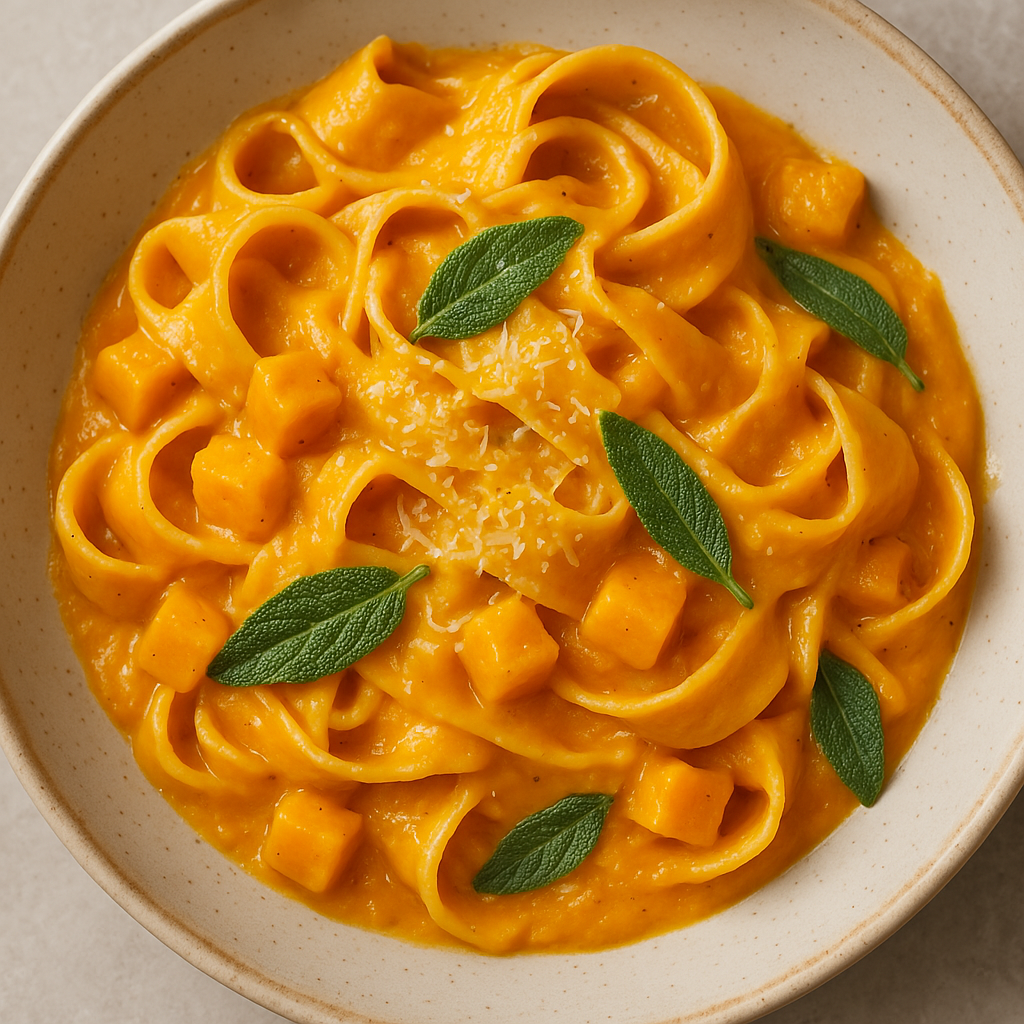
During fall, lovers of health-centric meals admire butternut Squash because of its seasonal availability and bundle like texture.
Butternut squash can be scrumptiously combined with savory dishes, making him an ideal companion. Its butternut’s sweetness enchants and a gentle metamorphose adds to the coarse accompaniment like sauce.
Butternut Squash Pasta
Pros:
- Mild sweetness complements other flavors
- Rich in vitamin A and dietary fiber
- More filling than zucchini pasta
Cons:
- More carbs than other vegetable noodles
- Longer prep time to cook or spiralize
3. Spaghetti Squash
Spaghetti squash distinguishes itself as a low-carb alternative to pasta due to the way it naturally separates into strands after cooking.
Unlike conventional pasta, it is far less caloric and carb dense which makes it a great option for keto, diabetic, or weight loss diets.
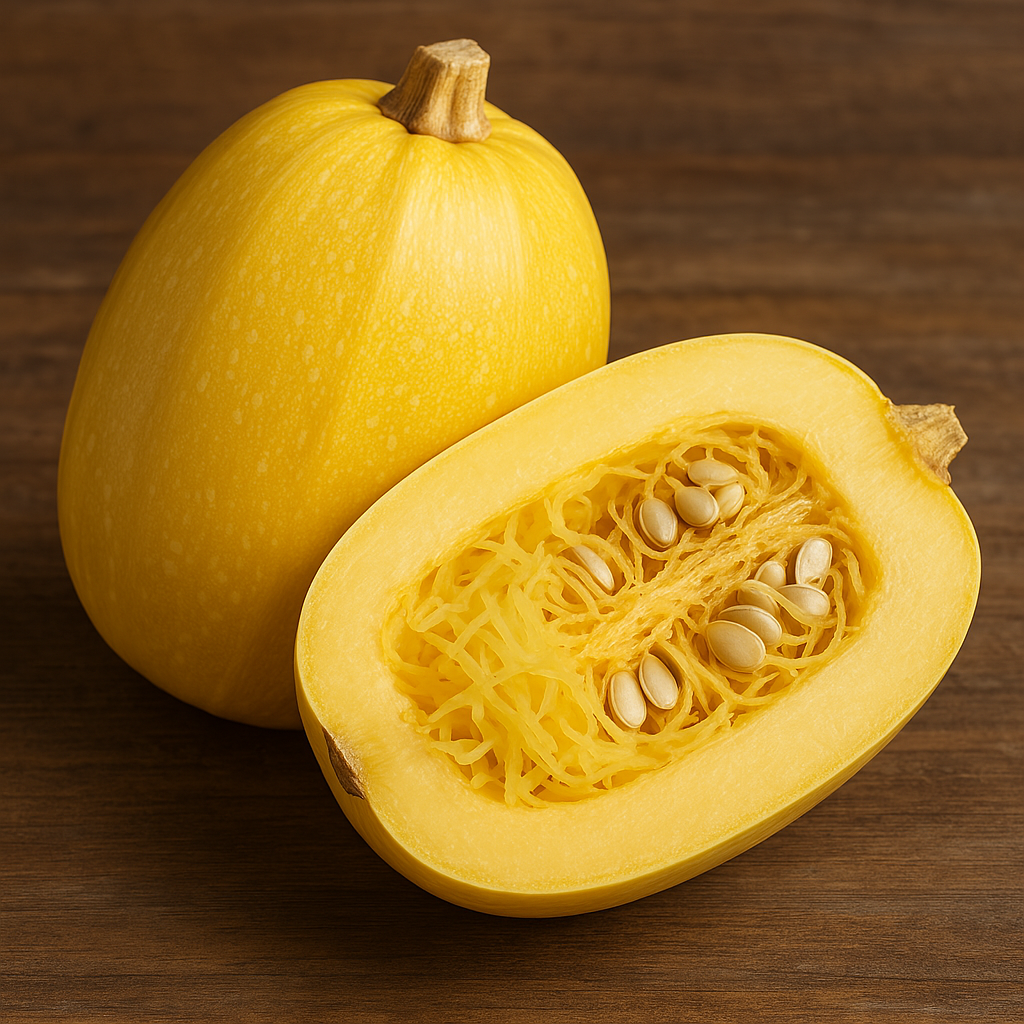
Unlike other alternatives, it actually tastes like spaghetti and offers a slightly nutty flavor along with a mild crunch.
Furthermore, it is rich in fiber, vitamin B6, and numerous other antioxidants, providing a wholesome meal without sacrificing your health goals.
Spaghetti Squash
Pros:
- Natural strands resembling “noodles”
- Low calorie, high in fiber
- Subtle taste pairs well with many sauces
Cons:
- Must be roasted or prepared in advance
- Unique texture compared to traditional pasta
4. Kelp Noodles
Kelp noodles are a distinct kind of low carb pasta alternative, made from the natural fibers of sea kelp. They have virtually zero net carbohydrates and calories.
One of the best things about kelp noodles is that they do not require any cooking. They only need a quick rinse or soak to soften.
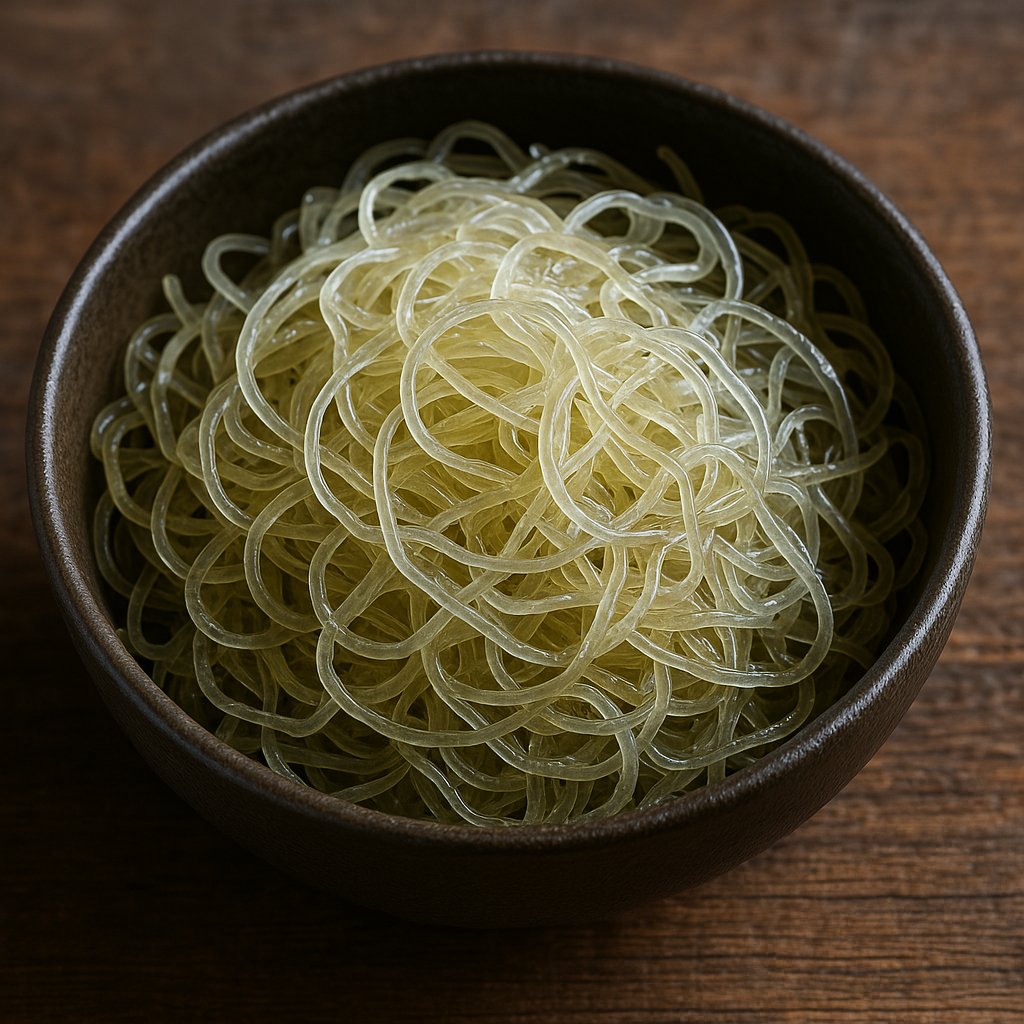
Like all types of noodles, kelp noodles have their own special flavor. In addition to that, they support thyroid health due to being low on carbs, perfect for strict low-carb diets, and are natural sources of iodine and trace minerals.
Most vegetable-based noodles don’t have a translucent, slightly crunchy texture which is an added perk to kelp noodles.
Kelp Noodles ‘Seaweed Noodles’
Pros:
- Crunchy texture offers something different
- Requires no cooking: just rinse
- Almost zero calories and carbs
Cons:
- Not everyone appreciates the taste of seaweed
- Must be tenderized or soaked for a softer texture
5. Palmini (Hearts of Palm Pasta)
Palmini is a unique low carbs pasta alternative made from the hearts of palm owing to its low fiber content and high fibrous profile.
What distinguishes Palmini from other pasta-often eaten in forms of noodles- is its firmer and al dente texture which makes it quite chewy and thus a preferable substitute for those who love to devour noodles.
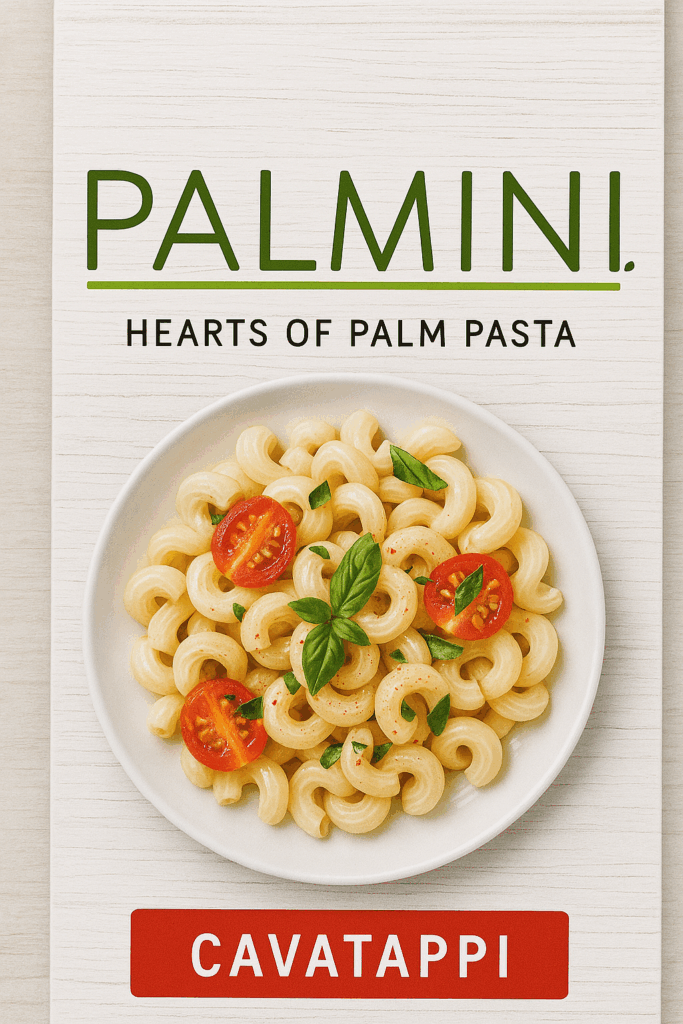
Moreover, it is an unprecedented choice for keto diet and diabetic people as it has only net few carbs per serving.
Furthermore, the product is pre-cooked, which brings an unrivaled aid in food preparation relief. Its bland taste ensures that it can take in and retain spices and sauces including but not limited to creamy Alfredo and zesty marinara on which anything can be served.
Palmini (Hearts of Palm Pasta)
Pros:
- Great option for low-carb and keto diets
- Comes canned and ready to use
- Pleasing mouthfeel and neutral flavor profile
Cons:
- If not rinsed, tastes slightly tangy or acidic
- More expensive than most vegetable options
6. Cabbage Noodles
Cabbage noodles stand out as a healthy and adaptable low-carb substitute for pasta. What sets them apart is their singular ingredient: fresh cabbage, which has no processed fillers or added sugars.
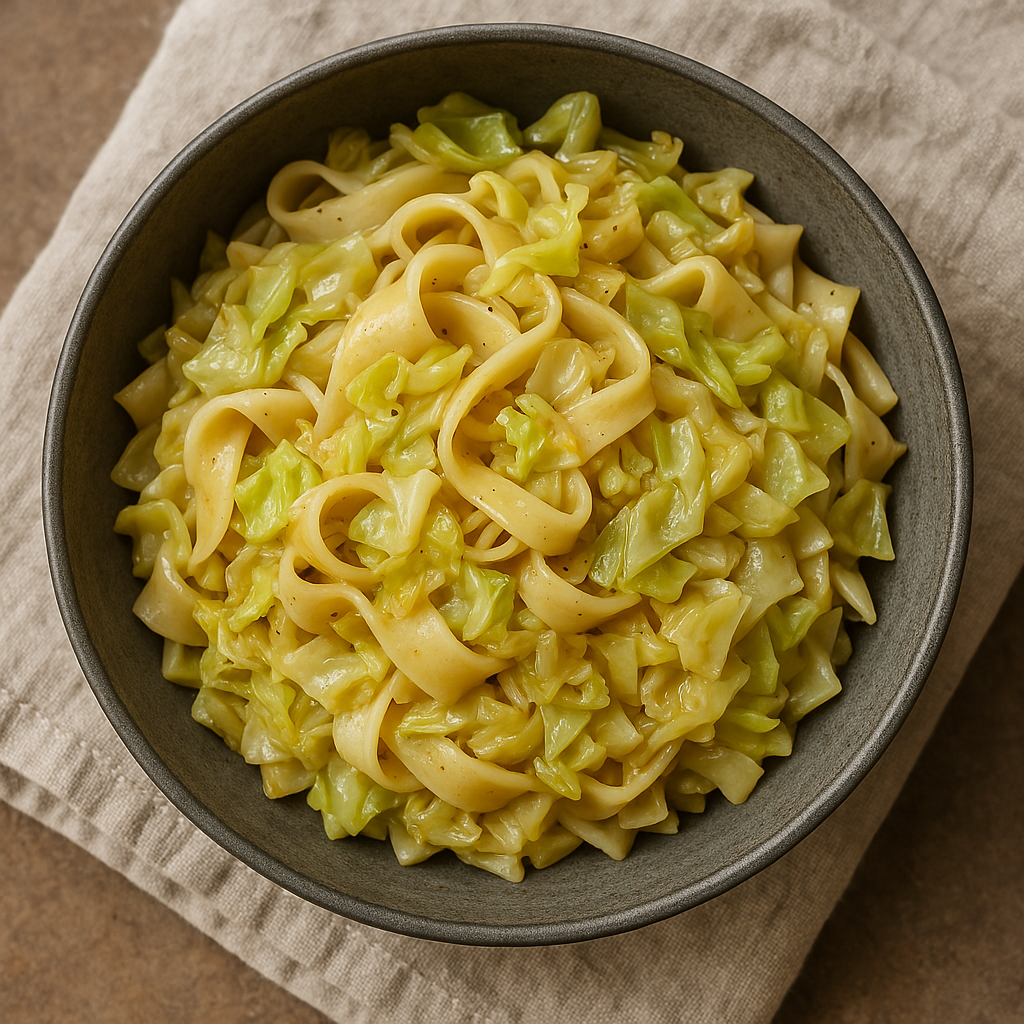
Although it doesn’t match the carb content of traditional pasta, it does surpass it in fiber, aiding digestion and keeping blood sugar levels steady.
When gently cooked and thinly sliced, cabbage noodles develop a tender yet crunchy texture which is delightful in stir-fries, soups, and saucy foods. Noodles made from cabbage are an optimal option for anyone following a low-carb diet.
Cabbage Noodles
Pros:
- Affordable and easily accessible
- High in fiber and antioxidants
- Good retention in stir-fries and soups
Cons:
- Strong flavor might mask subtle sauces
- Not a genuine noodle shape
7. Almond Flour Pasta
Pasta made out of almond flour is a low carbohydrate and more nutritious option compared to the traditional wheat based pasta.
Unlike other types of pasta, almond flour based pasta has a unique savory taste and dense structure because of the nutty flavor. It is best served with thick sauces and baked dishes.
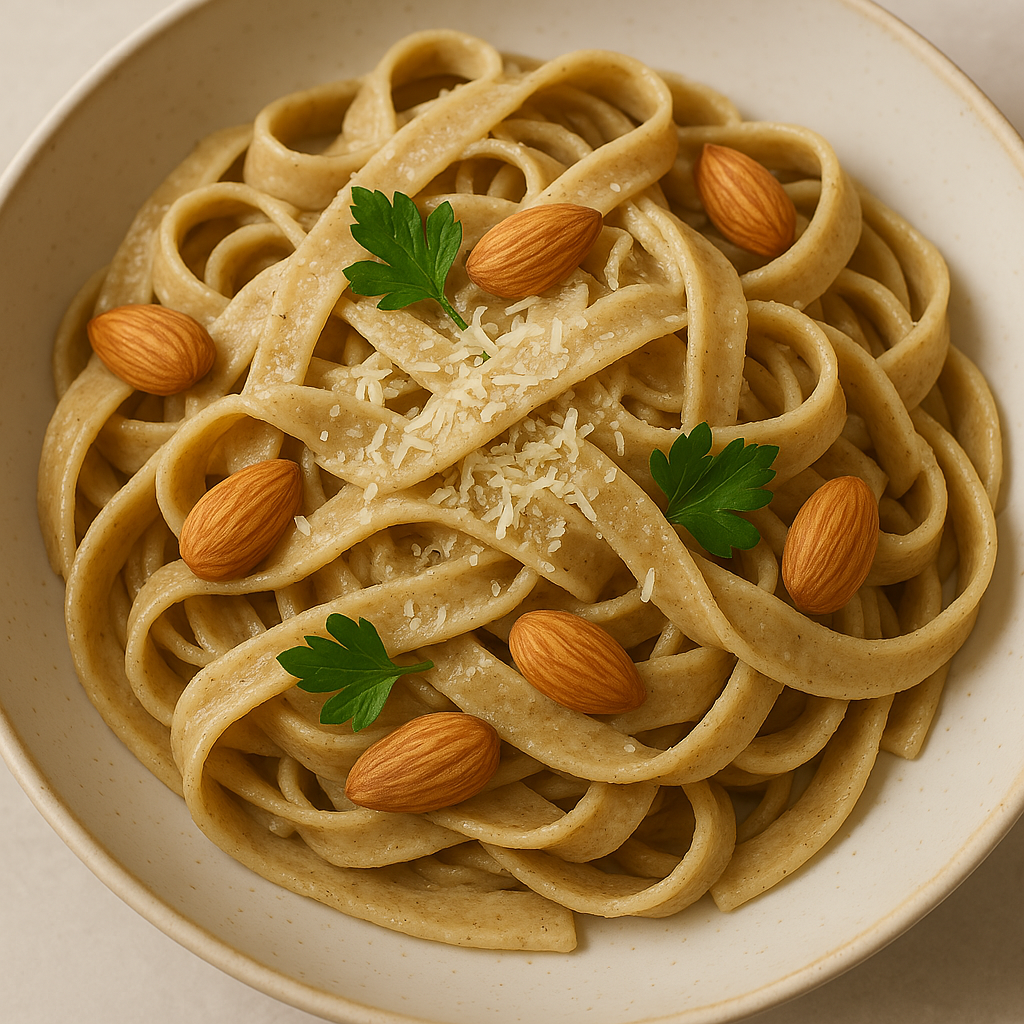
Almond flour excels in comparison to grain based pasta because it does not contain gluten and has a glycemic index making it a smart option for people on paleo, keto or diabetic friendly diets.
Almond pasta is rich in protein and healthy oils which along with keeping a person full reduces the net carbohydrates.
Almond Flour Pasta
Pros:
- Suitable for gluten-free and keto diets
- Rich in protein and healthy fats
- Entrance texture resembles traditional pasta more
Cons:
- More expensive or difficult to source
- Increased calorie count
8. Eggplant Noodles (Grilled or Sliced)
An inventive and flavorful low-carb pasta substitute, eggplant noodles are made by slicing eggplant into thin strips or ribbons.
Their distinctive characteristic is their hearty and meaty texture which works well in baked or layered dishes, such as low-carb lasagna.
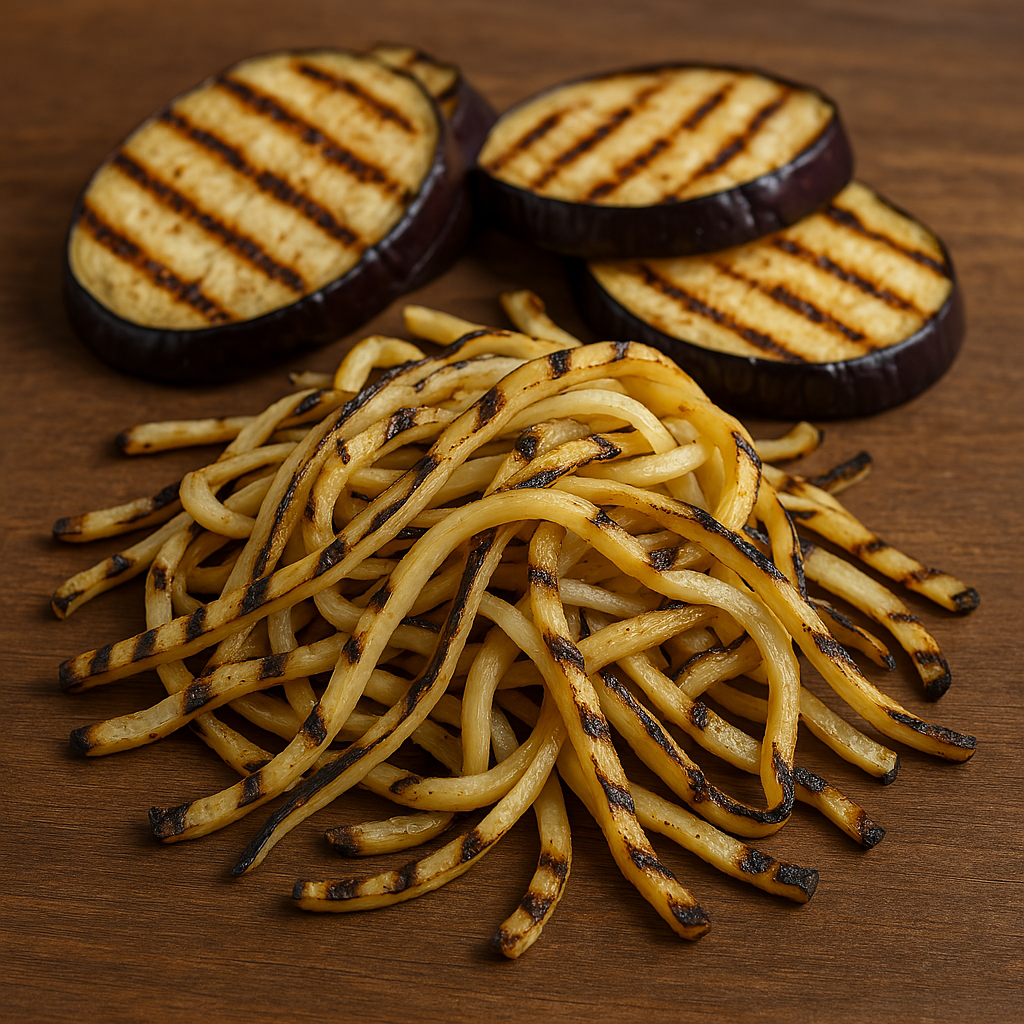
Eggplant is, by nature, low in carbs and high in fiber, making it easy to cut back on carbs while still enjoying a hefty meal. Rather, its slightly earthy flavor complements bold sauces, herbs, and cheeses.
Moreover, eggplant contains antioxidants such as nasunin that support cellular health which makes these noodles appealing nutritionally on top of being low-carb.
Eggplant Noodles
Pros:
- High in antioxidants and fiber
- Unique texture
- Goes well with bold sauces due to mild flavor
Cons:
- Needs prior salting to avoid bitterness
- Easily fractures
9. Celeriac Noodles (a.k.a. Celery Root)
Celeriac or celery root offers a unique alternative for low carb pasta in the form of celeriac noodles with a sweet and earthy flavor.
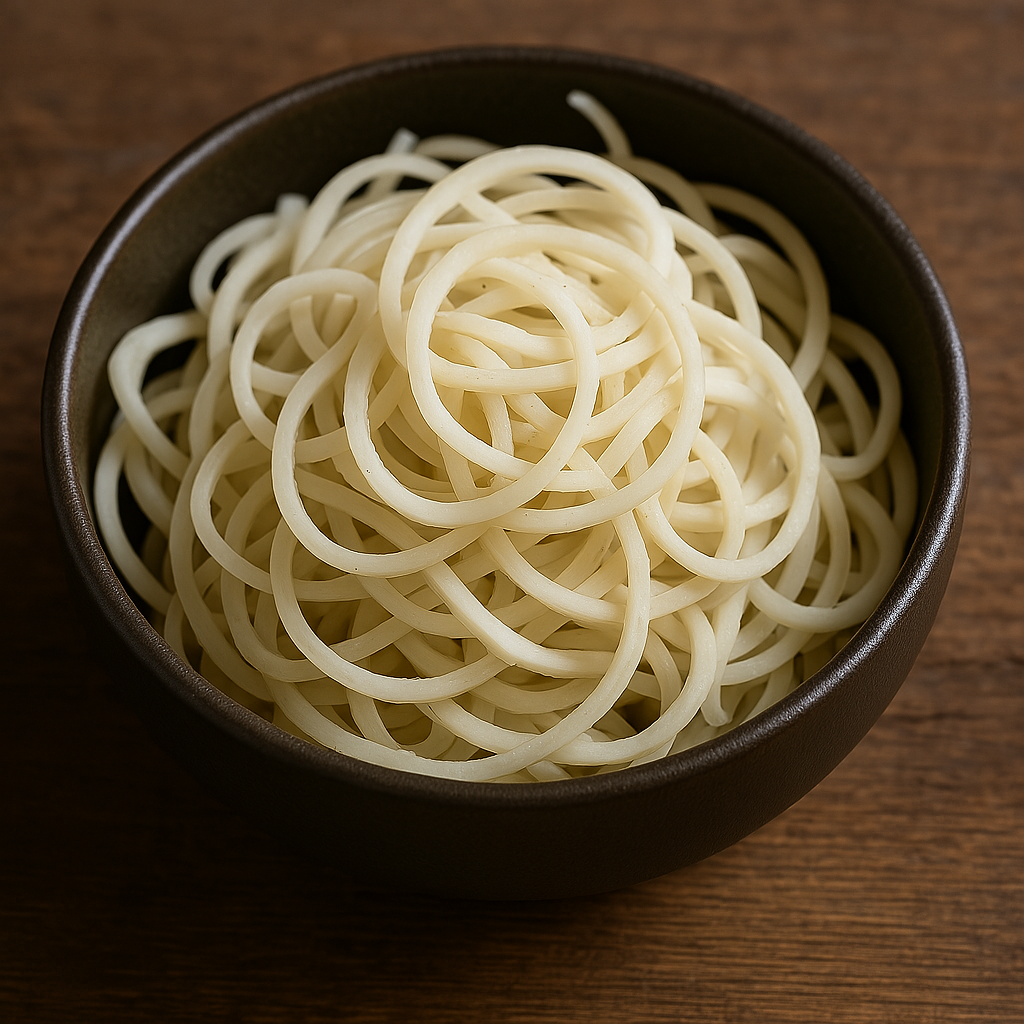
What makes celeriac noodles stand out is their chewy and dense texture that resembles normal pasta. Celeriac has much fewer carbs than normal pasta, making it ideal for keto as well as low-glycemic diets.
It is also rich in fiber, vitamin C, and potassium which is good for digestion and heart health. In addition to having a satisfying texture, these noodles soak up all sauces which makes them easier to incorporate into low carb meals.
Celeriac Noodles
Pros:
- Nutty, earthy taste
- Good fiber and vitamin K
- Firm noodles work well with sauces
Cons:
- Hard to find or less common
- Time-consuming peeling and prepping work
10. Lupin Flour Pasta
Lupin flour pasta is a particularly potent low-carb alternative to traditional pasta as it is made from lupin beans which are known for their high protein and fiber content.
It has an ultra low net carb count of 1-2 grams per serving which makes it one of the most keto friendly options available.
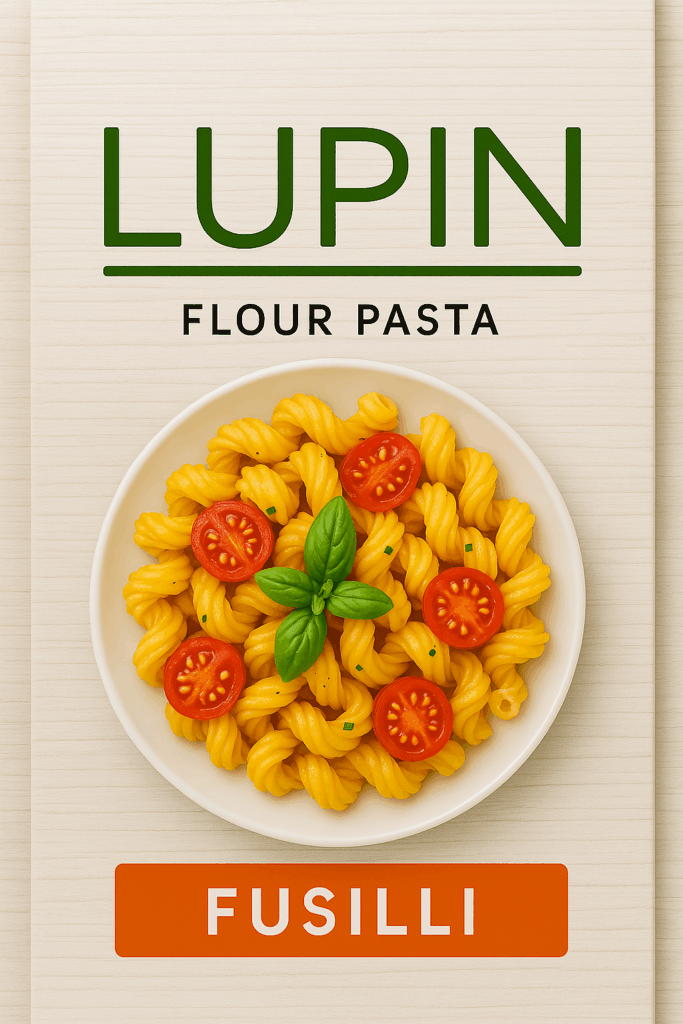
Unlike many other low-carb pastas, lupin flour pasta does not lose its firm, chewy texture that resembles traditional wheat pasta.
It is still gluten-free and high in prebiotics which makes it good for the gut. These factors make it a great option for people following low-carb diets and make it a functional food which helps in overall well-being.
Lupin Flour Pasta
Pros:
- Extremely low in net carbs
- Good dietary balance with high protein and fiber
- Gluten-free and keto-friendly
Cons:
- Some users report a slightly bitter aftertaste.
- Individuals with sensitivities may experience digestive discomfort.
Conclusion
Selecting the most suitable low-carb pasta substitutes considers dietary requirements, preferences, and even one’s culinary approach.
From vegetable selections such as zucchini or spaghetti squash noodles to more modern solutions like palmini or pasta made from lupin flour, there is something for everyone’s taste.
Not only do these options help reduce carbohydrate intake, but they also enhance the overall nutritional profile of your meals, making them both satisfying and healthier.


